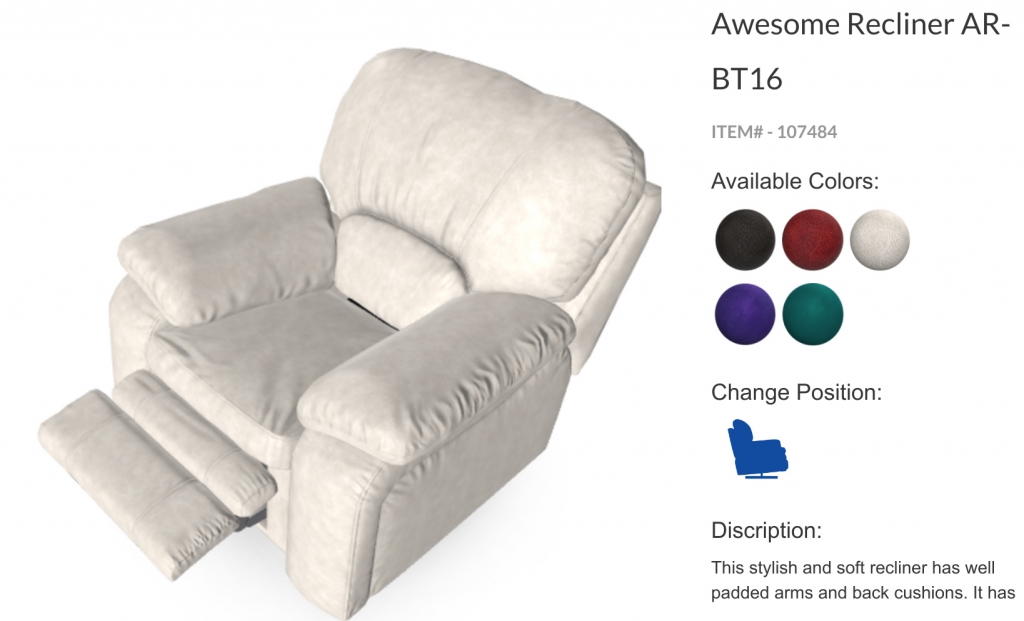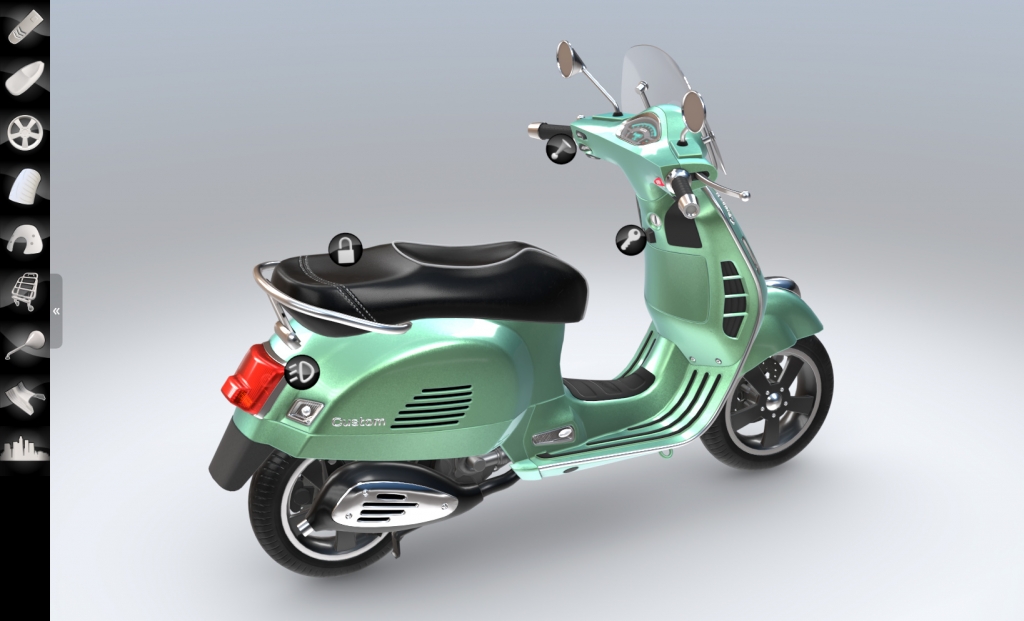We’ve been receiving multiple inquires via the contact form and on the forums about the possibility to integrate Verge3D with popular e-commerce platforms such as Woocommerce or Shopify.
We’ve had a long debate about this topic with Alex and I’d like to share some thoughts with the community.
WooCommerce and 3D
UPDATE: we implemented WooCommerce integration in version 2.16! See here for more info.
We’ve been using WooCommerce (a WordPress-based e-shop platform) with success on this very website for selling licenses and material packs. There should not be a big problem to extend a product page with a 3D view widget, for example.

However, Woocommerce is basically a 2D server-side framework where all products and their components/options should be created using PHP-based WordPress templates and the server-side admin interface. This contradicts with the 3D artist-oriented approach that we all enjoy in Verge3D so much.
Shopify and 3D
We’ve checked Shopify which was also mentioned by our customers. This is a cloud-based solution that seems to be not flexible enough to integrate a 3D configurator that easily (requires server-side coding using their own programming language).
CPQ and 3D
We have several customers offering CPQ (configure-price-quote) systems. Some of them will be presenting their solutions at the upcoming Verge3D conference in May. Those are mostly B2B solutions (guys please feel free to correct me or add more).
We’d really not like to start adding CPQ-like features to Verge3D as it would create unnecessary duplication. This would also hurt the idea of Verge3D being a universal, self-hosted and embeddable solution for all kind of applications (either e-commerce or not).
Verge3D for WordPress plugin
At the moment, we have a basic server-side kit of functionality in our WordPress plugin. This plugin is capable of publishing, handling file uploads, and offers basic e-commerce functionality such as placing orders and e-mail notifications with PDF invoice attachments.

Our solution is naturally 3D, with business logic assigned with Puzzles. In this approach most work is performed on the front-end. A product is configured in 3D and the data are sent to the back-end for processing. Obviously, data received from front-end cannot be trusted, so we are going to add a server-side filter script to verify the data.
Another thing we lack at the moment is payment gateway integration. But we think this is a matter of days/weeks to implement. We are inclined to integrate the Paypal and/or 2Checkout gateways into Verge3D so that you wouldn’t need Shopify/Woocommerce at all.
Shop with 3D, or 3D shop?
So our vision is full 3D shopping experience rather than a plain web store with embedded 3D product views. Something like this Three.js-based configurable mailer box store or our Scooter customizer.

So what do you think about all this? We’d really like to hear your opinions!

I have a background as an elearning developer. The Paypal option does interest me, and I wondered if there might be the ability to use it as a gateway to paid instructional design content? I guess right now your focus has been on a virtual catalog for sales, but I can envision this as a content delivery mechanism as well.
Yes, e-learning is another big topic. We got many customers requesting SCORM integration.
Hello Yuri,
You answered a question I was wondering about for a while. Integrating the Verge3D plugin with Woocomerce was something I thought was in the making. However, I think it is a good decision to develop an independent 3D online shop solution. Could the solution you are developing also be integrated into Drupal or other content management systems?
As always it is a joy to see all the new developments.
Best regards to you and the whole team,
Simone
Thank you for support Simone! Making a Drupal plugin should not be a problem.
Making an independent ecommerce with an interface like “Scooter – 3D” is the future. Yuri, who can do a step by step tutorial to get a result like Scooter 3d? Thanks!
making more tutorials is in our plans!
In my own explorations of this type of system, It would seem logical to me that I should be able to configure a system to generate unique part/assembly numbers based on user configurations. I’m sure that is something that is pretty obvious; but something perhaps worth pointing out.
I was even thinking that the series of choices could show an on-screen Part No as it is configured.
Yes, the parts’ numbers can be stored in a CSV file for example for which we have the CSV reader puzzle, or retrieved from a database as JSON through the “send data” puzzle.
forget woocom, HIT ME WITH THAT SHOPIFY!!!